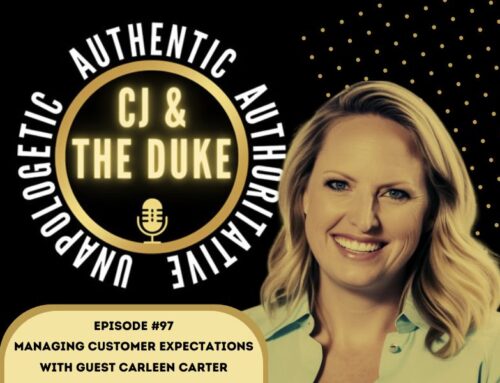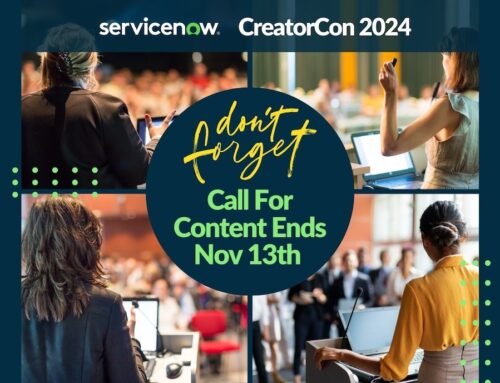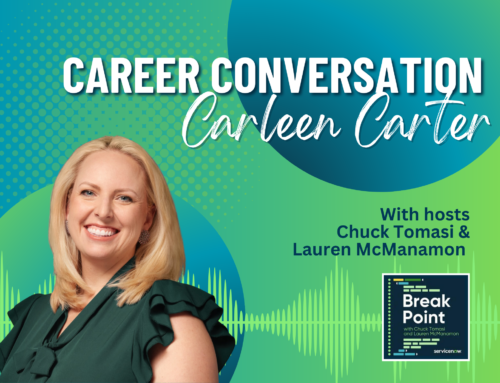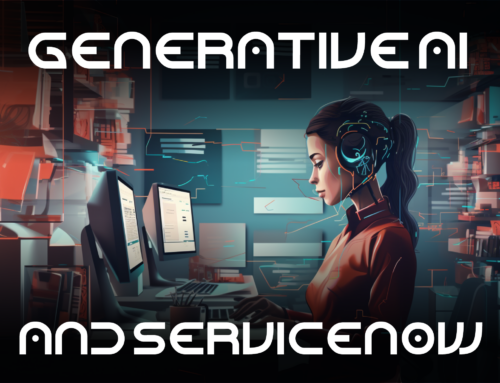Let’s face it: A comprehensive Asset Management solution might not be the sexiest idea your team has ever come up with, but it could be the most impactful.
Asset Management is one of the areas that can return your biggest ROI. Everyone knows they could probably manage their assets better, and at least once a quarter, you think about streamlining that spreadsheet that Mary’s team oversees – but then you get busy, and other more urgent crises come up… and you put that thought away for the next time.
Besides… even if you have the right technology, you might wonder what’s in it for you to load and maintain what could be thousands of Asset records. Further, many struggle with where to begin – Hardware only, Software assets, and/or other enterprise assets.
Then there is the bothersome issue of how to connect it to HW and SW requests. We are seeing hundreds of our clients leverage the unified architecture of ServiceNow to holistically manage assets, relate it to the CMDB, and request management – providing a harmonious solution.
For hundreds of companies leveraging ServiceNow to deploy everything from simple tracking to advanced, predictive asset provisioning, what’s in it for them is millions and millions of dollars in real-world savings, starting on nearly Day One.
Recently Carleen Carter, Acorio’s Director of Technical Consultants, gave a webinar talking about the revolution that is happening with ServiceNow Asset Management. In this blog, we will do our part to keep fueling that revolution.
The sections below will review the key features of a successful Asset Management program. We are also officially rolling out our Free online tool: The Asset Management Readiness Assessment (based on standardized ServiceNow and other industry Asset Management best practices) to give your company a score on your company’s current state of Asset Management processes – and provide some recommendations to improve your score, too.
Getting your company on track to save millions next year with a well-planned ServiceNow Asset Management program does not need to be a daunting effort. By starting with your baseline, and adding in some process and self-awareness, you can be well on your way to Asset Management readiness in no time!
The Nuts and Bolts of Asset Management
As you launch into your company’s new Asset Management revolution, it’s helpful to understand the overarching framework of how most companies approach asset tracking and organization.
We know the reason many firms never take that extra step each quarter and begin true asset management is because it can seem like a heavy “lift” for your team. But, it’s actually less onerous than you might expect. Modern technology (like ServiceNow) and a little common sense have really streamlined Asset efforts into a very logical four-step process:
1. Find and track all hardware and software assets in your environment.
If you don’t know what you own, or where your IT assets are actually located, then you have no idea what your technology is costing you.
These discoveries can be lucrative. You may find that you have outdated equipment in data centers that should be replaced, or your computers are running on out-of-support operating systems like Windows 7, leaving your company vulnerable to possible viruses and expensive downtime.
To streamline your tracking process, it’s especially useful to leverage either an automated tool, like Discovery, or an integration with Microsoft System Center Configuration Manager (SCCM), to load Assets into a macro-level enterprise system, such as ServiceNow.
As you get started on your Asset Management journey, you might want to start small and pick one category that looks like low-hanging fruit to begin your asset management categorization. For example, you could just look at all your hardware assets, or pick a single software category, perhaps starting with Microsoft or Adobe, or pick off more expensive software only used by a small user base.
2. Develop rules of the road to improve your asset forecasting.
Do you know where hardware and software assets are coming from? Can an employee purchase an asset from Best Buy using a corporate card, or do you specifically order them through a vendor via an internal procurement request?
Establishing a clear policy here can help you control costs. As you can imagine, a laptop ordered in a large volume order might be acquired cheaper than purchasing just one from Amazon. In addition to Hardware rules, you also want to have software processes in place when people request software, change roles, or leave the company.
Other policies that impact asset forecasting include actions that determine how often you refresh assets in your environment. Most companies have a strategy in place to immediately replace assets due to theft or disrepair. More sophisticated programs develop a long-term Asset Refresh strategy that takes into account your firm’s hiring strategy and other business conditions. Remember, you want to remove old assets from your environment before they become too costly to maintain.
You will also want to determine what to do with legacy equipment. Many firms opt to repurpose older equipment in less critical roles, for example, as a lobby registration machine, a donation to charity, or they may sell older assets.
3. Look to improve efficiency and asset optimization.
A strong Asset Management program includes solutions to align or reallocate assets to save money. Once you can confidently look at a clear matrix of all your IT assets in-house, take the time to search for trends and opportunities for savings. One interesting report you can run looks for any hardware or software models that consistently report issues in your environment. Another helpful report tracks the number of devices per user per department. Maybe some non-power users don’t need both a desktop and laptop, or, conversely, you could save time and efficiency (and turnover costs) by giving a developer a more powerful laptop.
Perhaps instead of maintaining data centers full of servers and network equipment, you can take advantage of cloud-based hosting services like Amazon Web Services (AWS) or Azure – exchanging the maintenance costs of hardware assets for the subscription costs for these services. The key here is to think logically about how you are allocating assets and look for places to improve that approach.
Another potential area of savings is instead of issuing every employee a laptop, only issue laptops to those employees who need one per their job function (IT for example) and use lower cost, thin clients for other employees who may only ever need word processing and spreadsheet programs.
4. Get Secure – Keep an eye out for compliance & avoid regulatory headaches.
Once you have an accurate Asset inventory, you can develop Software and Hardware policies designed to minimize security risk, audit risk, and maintenance costs.
These should include internal policies to determine what technology is approved for your environment, or what is not, and to track accountability of actual usage against those standards. If you say that you only allow specific software, but everyone in the company is still downloading every link their second cousin sends out, you’re not really winning on this asset management pillar.
Your Asset Security Policies can take the form of creating a standard image for employee workstations based on role, prohibiting the installation of software not marked as “Certified” in ServiceNow, and recycling equipment at the end of the Warranty period.
Varying Degrees of Readiness in the ServiceNow Asset Management Methodology
To start your very own Asset management program, you need to know your baseline – where your company stacks up in maturity against the four-step process above. Lucky for you, this is an industry that has a lot of standardized procedures to lay the groundwork for a killer asset program. (As you can imagine, experienced Asset Managers tend to be very organized!)
One that we believe in the most incorporates both ISO Implementation tiers and the “towers” within the ServiceNow Asset Management Best Practices Methodology (shown in the chart below).
| Tier |
|---|
| Tier 0 Governance Capability The critical foundational elements include Policy with Roles & Responsibilities, Processes, and Education/Training. |
| Tier 1 Trustworthy Data Good data is a prerequisite for good ITAM & SAM. A common management observation that applies here is that “you cannot manage what you do not know.” This tier also provides the basis for demonstrating inventory management and license compliance, which is typically a high priority management objective. |
| Tier 2 Practical Management In practice, practical management begins after the organization has recognized the issues resulting from not having trustworthy data. The organization recognizes the extent of the risks it faces as well as opportunities for improvement and savings. This tier includes targeting and delivering “quick wins” made obvious by tier 1. |
| Tier 3 Operational Integration Building on the foundation of the previous two tiers, this tier drives the integration of ITAM & SAM into operational ITSM processes. The result is improved efficiency and effectiveness. |
| Tier 4 Strategic Conformance This tier addresses the more advanced and demanding aspects of full ITAM & SAM, including its full integration into strategic planning for the organization, including but not limited to Business Service Management and Financial Management. |
As the chart explains, these ServiceNow Asset Management readiness tiers look at the specific Asset Management activities your team is currently performing and/or implementing, and then layers in a maturity “score” for your company based on your current capabilities and sophistication. From there, you can work with your team or a strategic partner to develop an implementation roadmap.
Get Started: Score Your Asset Readiness (And an ISO Tier 0 Score)
Because everyone needs to crawl before they walk, we designed a new online tool based on both ISO and ServiceNow Asset management best practices to help you establish your baseline. (Lucky for you – we are literally giving away something that can frequently take you days and days of onsite workshops to assess.)
By answering just five short questions, you will get an initial scorecard on your readiness to launch into a full-fledged Asset Management program by scoring your baseline (also known as Tier 0 compliance above).
How Does Your Asset Readiness Look?
How did you do? If you did badly, don’t feel bad. Even at a lower-level baseline, many companies are in the early stages of truly maximizing their asset management strategy.
It’s also really hard to get a 100% (or a 1.0 score) on all four Tiers of the ServiceNow Asset Management Methodology. And by hard, I mean that in our ten years developing Asset Management Strategies, I haven’t seen a perfect score. Because this tower looks at advanced optimization processes and cohesive, consistent execution, there’s almost always something your asset strategy can improve on!
What this score does offer is the first layer. From here, you can begin outlining an informed Asset Management Roadmap and define critical foundational elements for your firm, including necessary police, who will be responsible for execution, recommending new processes to adopt, and any education or training you might need to get your team past the bleeding edge of the Asset Revolution.
NOTE: This content was originally posted on May 22nd, 2017 on the Acorio website at https://www.acorio.com/start-here-to-save-millions-with-servicenow-asset-management/ The Acorio brand retired in April 2023 after acquisition by NTT DATA. Some links may no longer work.













